Sports
Branding, marketing a complicated issue for out athletes
Changing demographics among millennials bode well for endorsements, sponsorships
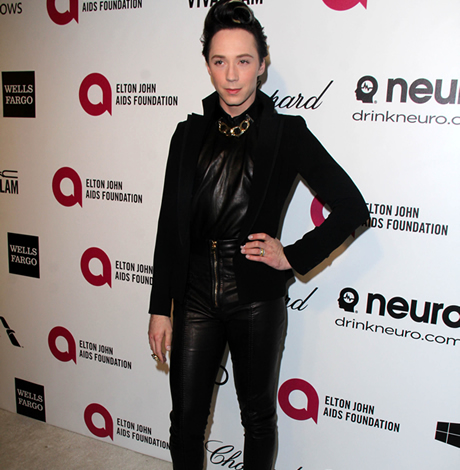
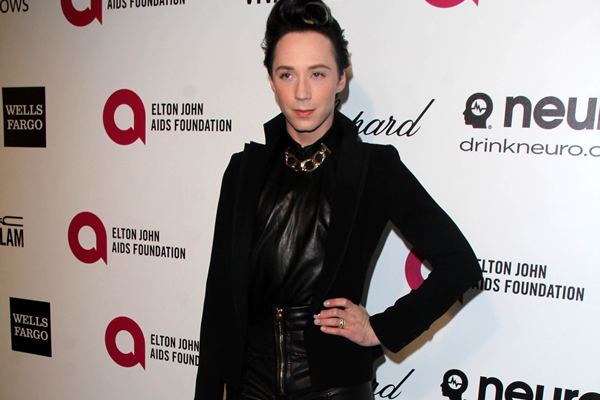
‘Being the absolute truest brand of myself has been the greatest career asset I’ve had,’ said figure skater Johnny Weir. (Photo by kathclick; courtesy Bigstock)
Just 16 years old, Johnny Weir was already one of the world’s top international figure skaters. The sport was a lucrative business and Weir’s talent amassed attention from agencies worldwide.
“The first agency that approached me said, ‘We really want you, but you can’t be gay if we represent you,'” Weir says. “I hadn’t even come out to my mother.”
Sports marketing is a $70-plus billion industry and one in which gay athletes are still finding their footing with balancing their personal brand and their sexuality. But it wasn’t long ago that being out wasn’t widely accepted by the sports community or its stakeholders.
“When we won the World Cup in 1999, the networks were very curious about where I was running to celebrate,” says recent National Soccer Hall of Fame inductee Briana Scurry. “The cameras followed me. But when they realized it was to my girlfriend, they cut away.”
Presentation and representation of an athlete dictates the career. In most cases the majority of an athlete’s lifetime earnings and social impacts come by way of sponsorships and marketing opportunities so branding is the most important game many athletes will ever play. But it’s not simple. And for gay athletes, finding an identity that appeals to teammates, fans and sponsors alike is an even more complex facet of the business.
Though agencies and corporations weren’t always open to partnering with gay athletes, augmented acceptance has alleviated constraints on their opportunities within the industry. “Demographics have changed,” says Hudson Taylor, founder of Athlete Ally. “Younger generations are very accepting. Sponsors and agencies have seen both internal backing and increased support from consumers.”
Now, 18 years since Briana Scurry and Johnny Weir were penalized for their sexual orientation, it’s one of the key aspects considered when developing an athlete’s personal brand.
Dan Levy, a senior vice president with sports marketing firm Wasserman suggests, “People get excited when athletes come out, so players feel pressure to present their orientation publicly. It’s a piece of the puzzle; it’s a variable you have to take into consideration when trying to create opportunities.”
But there’s still no clear-cut approach to branding for the gay athlete. As restraints faded with mounting cultural approval, new challenges emerged. No longer fixated on the industry’s consent, gay athletes must consider the degree to which they represent and champion their sexual orientation through their branding.
“Abby [Wambach] felt really strongly that true progress was not having to come out and talk about it publicly,” says Levy.
Wambach, whose first public confirmation of her sexual orientation was her 2013 marriage, told the Associated Press, “I never felt like I was in a closet. I’ve never been asked a question about my relationship — rightfully so, because it shouldn’t matter.”
Laina Cohn, partner at Cohn Torgan Management and representative for Johnny Weir suggests that not every athlete is equipped to lead the charge. “Johnny wasn’t an activist, he was an athlete. His whole world was about getting on the ice and winning. He never stepped onto the ice because he was gay.”
Some athletes view their branding as a responsibility. Joanna Lohman, one of the National Women’s Soccer League’s most outspoken advocates, embraces the position. “I am admired for being out and proud. I realize how special it is to be viewed that way — it’s why I take advocating so seriously. It’s important for me to use the platform and brand that I have as a professional athlete to elevate the community.”
Similarly, Megan Rapinoe utilized her visibility and personal brand to represent the LGBT community after inking a healthy deal with Nike. “Megan was the first athlete I really dug in with on a coming out,” Levy says. “She felt really strongly after the World Cup that she wanted people to see that there are a lot of gay athletes out there.” Rapinoe in 2014 served as guest editor of the Washington Blade’s Sports Issue.
But it’s a different world for men, a view shared by many.
“There’s a lot of social pressure on the male side,” Lohman submits. “It’s not a very supportive environment. There are labels and stigmas associated with being a gay man in sports, so you just don’t see that represented very often. On the women’s side it’s much more accepted, if not assumed.”
Scurry says that hesitation on the part of male athletes stems from existing in a different culture. “For female athletes now, it doesn’t seem to hinder them. But with male athletes, it’s different. There are a lot of male athletes that have chosen not to come out until after their career was over.”
Biases against gay males have been integrated into the actual structure of sports perpetuating stereotypes and suppressing awareness. “Sport is a gendered space, an institution that teaches masculinity and femininity and it does so in a very binary way,” Taylor says. “That masculinity is often wrongly reinforced with homophobic language.”
But representatives like Cohn are optimistic. “I hope things change. I hope that by having stories told, by sharing experiences through television and social media the culture will eventually be different.”
Levy recognizes the shift in the acceptability of promoting gay athletes. “It mirrors our culture and what has changed. The progress we’ve made as a society is showing up in the world of sports. Maybe it’s at a different pace, but progress has been made.”
Briana Scurry sees a new landscape for the gay athlete’s public persona.
“There’s a huge difference in athlete presentation now,” she says. “One of the most memorable moments of the 2015 World Cup was Abby running to her partner after the final match. Nobody looked away. Eighteen years since the camera swung away from me, it stayed right on them. It’s a clear differentiator between how gay athletes could present their brands and themselves then and now.”
For Weir, presenting himself authentically was empowering.
“I could’ve signed with that first agency at 16 years old and completely whitewashed myself. But I would have been boring. I would have never had the career I’ve had. I stuck to my guns and we created this brand and my agency, they support me as a human being. … Being the absolute truest brand of myself has been the greatest career asset I’ve had.”
India
Anaya Bangar challenges ban on trans women in female cricket teams
Former Indian cricketer Sanjay Bangar’s daughter has received support
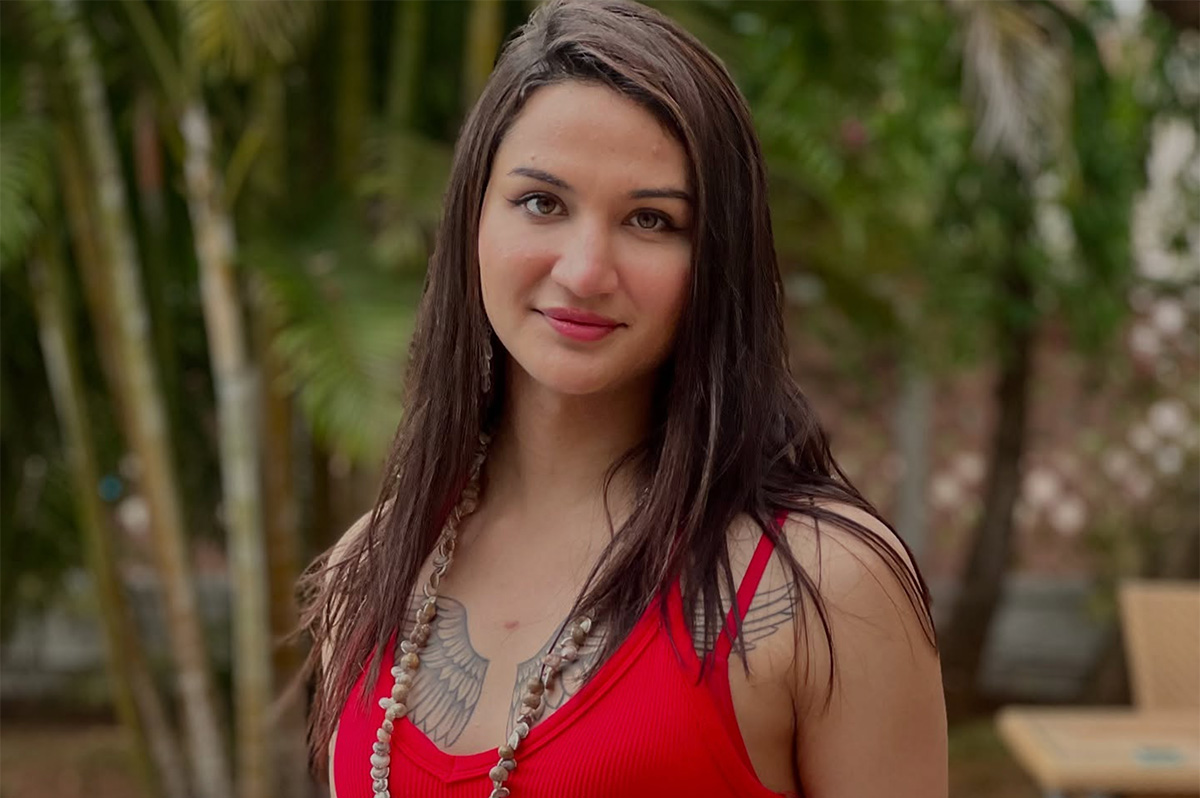
Anaya Bangar, the daughter of former Indian cricketer Sanjay Bangar, has partnered with the Manchester Metropolitan University Institute of Sport in the U.K. to assess her physiological profile following her gender-affirming surgery and undergoing hormone replacement therapy.
From January to March 2025, the 23-year-old underwent an eight-week research project that measured her glucose levels, oxygen uptake, muscle mass, strength, and endurance after extensive training.
The results, shared via Instagram, revealed her metrics align with those of cisgender female athletes, positioning her as eligible for women’s cricket under current scientific standards. Bangar’s findings challenge the International Cricket Council’s 2023 ban on transgender athletes in women’s cricket, prompting her to call for a science-based dialogue with the Board of Control for Cricket in India and the ICC to reform policies for transgender inclusion.
“I am talking with scientific evidence in my hand,” Bangar said in an interview posted to her Instagram page. “So, I hope, this makes an impact and I will be hoping to BCCI and ICC talking with me and discussing this further.”
On Nov. 21, 2023, the ICC enacted a controversial policy barring trans women from international women’s cricket. Finalized after a board meeting in Ahmedabad, India, the regulation prohibits any trans player who has experienced male puberty from competing, irrespective of gender-affirming surgery or hormone therapy. Developed through a 9-month consultation led by the ICC’s Medical Advisory Committee, the rule aims to safeguard the “integrity, safety, and fairness” of women’s cricket but has drawn criticism for excluding athletes like Canada’s Danielle McGahey, the first trans woman to play internationally. The policy, which allows domestic boards to set their own rules, is slated for review by November 2025.
Bangar shared a document on social media verifying her participation in a physiological study at the Manchester Metropolitan University Institute of Sport, conducted from Jan. 20 to March 3, 2025, focused on cricket performance. The report confirmed that her vital metrics — including haemoglobin, blood glucose, peak power, and mean power — aligned with those of cisgender female athletes. Initially, her fasting blood glucose measured 6.1 mmol/L, slightly above the typical non-diabetic range of 4.0–5.9 mmol/L, but subsequent tests showed it normalized, reinforcing the study’s findings that her physical profile meets female athletic standards.
“I am submitting this to the BCCI and ICC, with full transparency and hope,” said Bangar. “My only intention is to start a conversation based on facts not fear. To build space, not divide it.”
In a letter to the BCCI and the ICC, Bangar emphasized her test results from the Manchester Metropolitan University study. She explained that the research aimed to assess how hormone therapy had influenced her strength, stamina, haemoglobin, glucose levels, and overall performance, benchmarked directly against cisgender female athletic standards.
Bangar’s letter to the BCCI and the ICC clarified the Manchester study was not intended as a political statement but as a catalyst for a science-driven dialogue on fairness and inclusion in cricket. She emphasized the importance of prioritizing empirical data over assumptions to shape equitable policies for trans athletes in the sport.
Bangar urged the BCCI, the world’s most influential cricket authority, to initiate a formal dialogue on trans women’s inclusion in women’s cricket, rooted in medical science, performance metrics, and ethical fairness. She called for the exploration of eligibility pathways based on sport-specific criteria, such as haemoglobin thresholds, testosterone suppression timelines, and standardized performance testing. Additionally, she advocated for collaboration with experts, athletes, and legal advisors to develop policies that balance inclusivity with competitive integrity.
“I am releasing my report and story publicly not for sympathy, but for truth. Because inclusion does not mean ignoring fairness, it means measuring it, transparently and responsibly,” said Bangar in a letter to the BCCI. “I would deeply appreciate the opportunity to meet with you or a representative of the BCCI or ICC to present my findings, discuss possible policy pathways, and work towards a future where every athlete is evaluated based on real data, not outdated perceptions.”
Before her transition, Bangar competed for Islam Gymkhana in Mumbai and Hinckley Cricket Club in the U.K., showcasing her talent in domestic cricket circuits. Her father, Sanjay Bangar, was a dependable all-rounder for the Indian national cricket team from 2001 to 2004, playing 12 test matches and 15 One Day Internationals. He later served as a batting coach for the Indian team from 2014 to 2019, contributing to its strategic development.
Cricket in India is a cultural phenomenon, commanding a fanbase of more than 1 billion, with more than 80 percent of global cricket viewership originating from the country.
The International Cricket Council, the sport’s governing body, oversees 12 full member nations and more than 90 associate members, with the U.S. recently gaining associate member status in 2019 and co-hosting the 2024 ICC Men’s T20 World Cup. The BCCI generated approximately $2.25 billion in revenue in the 2023–24 financial year, primarily from the Indian Premier League, bilateral series, and ICC revenue sharing. The ICC earns over $3 billion from media rights in India alone for the 2024–27 cycle, contributing nearly 90 percent of its global media rights revenue, with the BCCI receiving 38.5 percent of the ICC’s annual earnings, approximately $231 million per year.
Women’s cricket in India enjoys a growing fanbase, with over 300 million viewers for the Women’s Premier League in 2024, making it a significant driver of the sport’s global popularity. The International Cricket Council oversees women’s cricket in 12 full member nations and over 90 associate members, with the U.S. fielding a women’s team since gaining associate status in 2019 and competing in ICC events like the 2024 Women’s T20 World Cup qualifiers. The BCCI invests heavily in women’s cricket, allocating approximately $60 million annually to the WPL and domestic programs in 2024–25, while contributing to the ICC’s $20 million budget for women’s cricket development globally. India’s media market for women’s cricket, including WPL broadcasting rights, generated $120 million in 2024, accounting for over 50 percent of the ICC’s women’s cricket media revenue.
“As a woman, I feel when someone says that they are women, then they are, be trans or cis. A trans woman is definitely the same as a cis woman emotionally and in vitals, and specially, when someone is on hormone replacement therapy. Stopping Anaya Bangar from playing is discrimination and violation of her rights. It is really sad and painful that every transwoman need to fight and prove their identity everywhere,” said Indrani Chakraborty, an LGBTQ rights activist and a mother of a trans woman. “If ICC and BCCI is stopping her from playing for being transgender, then I will say this to be their lack of awareness and of course the social mindsets which deny acceptance.”
Chakraborty told the Blade that Bangar is an asset, no matter what. She said that the women’s cricket team will only benefit by participation, but the discriminating policies are the hindrance.
“Actually the transgender community face such discrimination in every sphere. In spite of being potent, they face rejection. This is highly inhuman. These attitudes is regressive and will never let to prosper. Are we really in 2025?,” said Chakraborty. “We, our mindset and the society are the issues. We, as a whole, need to get aware and have to come together for getting justice for Anaya. If today, we remain silent, the entire community will be oppressed. Proper knowledge of gender issues need to be understood.”
The BCCI and the International Cricket Council have not responded to the Blade’s repeated requests for comment.
Sports
English soccer bans transgender women from women’s teams
British Supreme Court last month ruled legal definition of woman limited to ‘biological women’
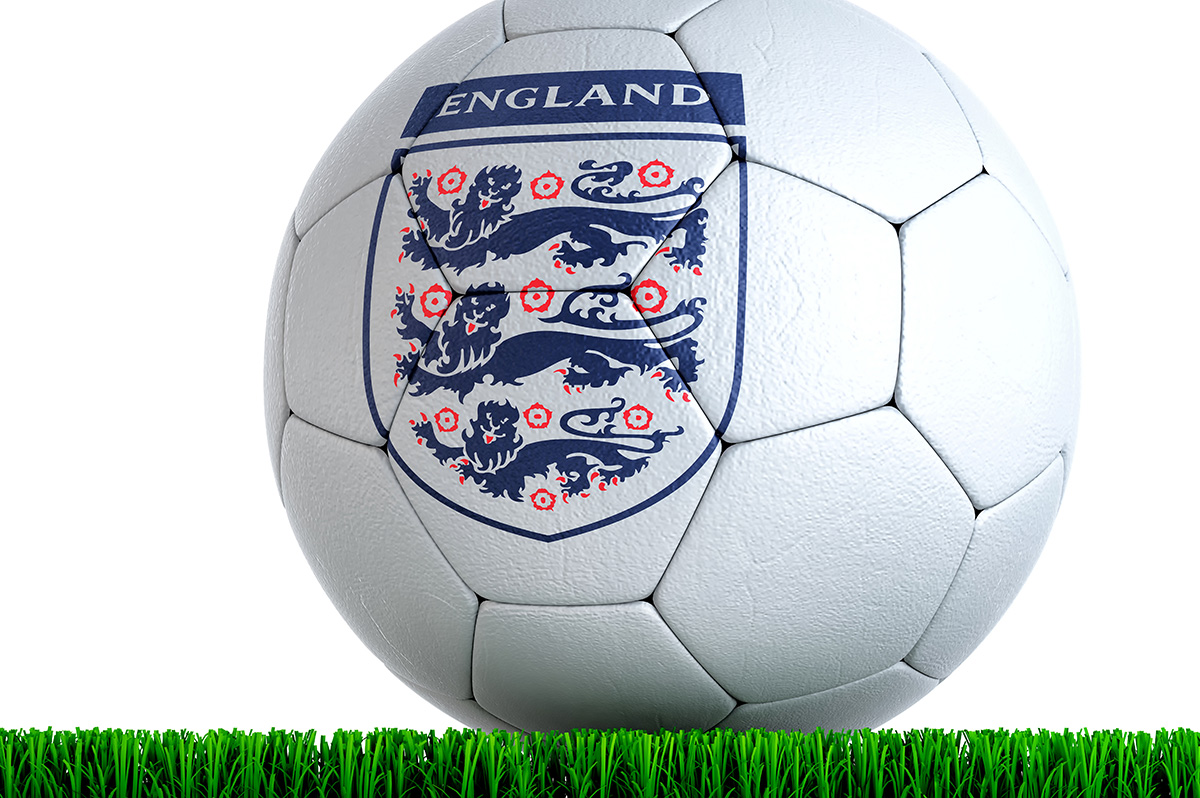
The organization that governs English soccer on Thursday announced it will no longer allow transgender women to play on women’s teams.
The British Supreme Court on April 16 ruled the legal definition of a woman is limited to “biological women” and does not include trans women. The Football Association’s announcement, which cites the ruling, notes its new policy will take effect on June 1.
“As the governing body of the national sport, our role is to make football accessible to as many people as possible, operating within the law and international football policy defined by UEFA (Union of European Football Associations) and FIFA,” said the Football Association in a statement that announced the policy change. “Our current policy, which allows transgender women to participate in the women’s game, was based on this principle and supported by expert legal advice.”
“This is a complex subject, and our position has always been that if there was a material change in law, science, or the operation of the policy in grassroots football then we would review it and change it if necessary,” added the Football Association.
The Football Association also acknowledged the new policy “will be difficult for people who simply want to play the game they love in the gender by which they identify.”
“We are contacting the registered transgender women currently playing to explain the changes and how they can continue to stay involved in the game,” it said.
The Football Association told the BBC there were “fewer than 30 transgender women registered among millions of amateur players” and there are “no registered transgender women in the professional game” in England, Scotland, Wales, and Northern Ireland.
The Scottish Football Association, which governs soccer in Scotland, is expected to also ban trans women from women’s teams.
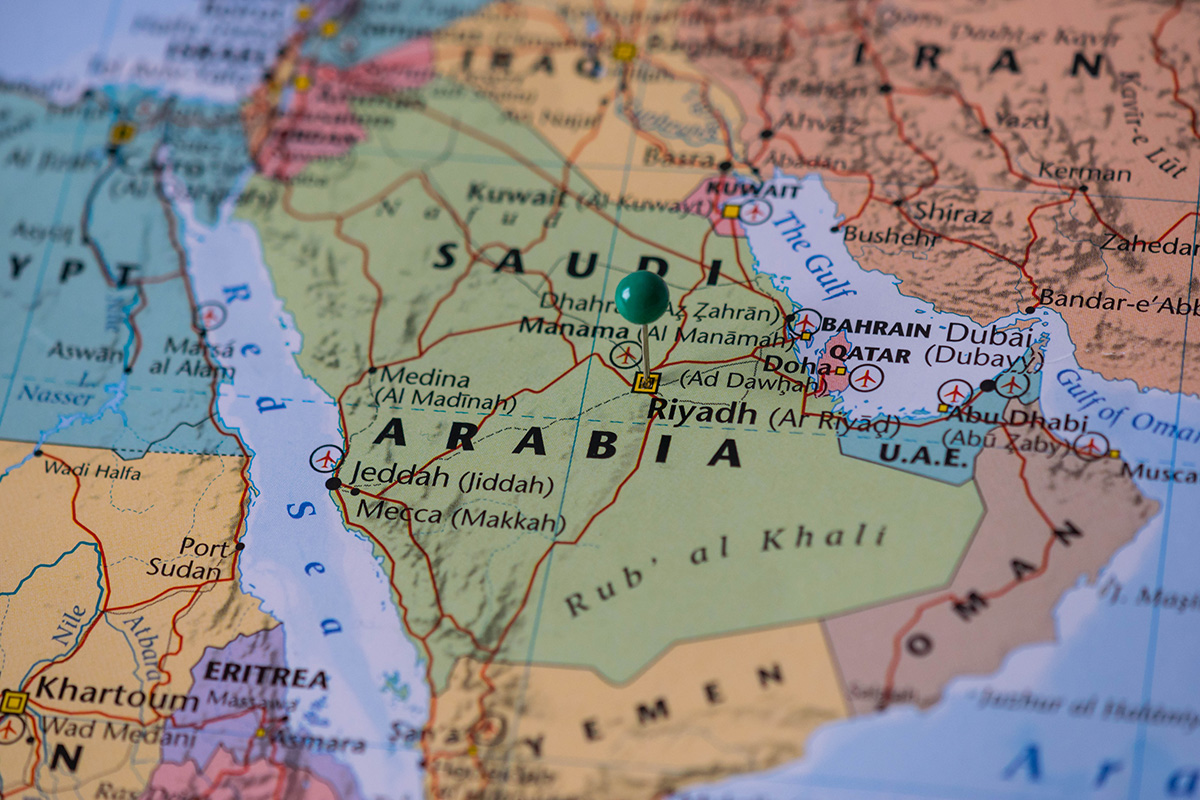
FIFA has announced Saudi Arabia will host the 2034 World Cup, despite concerns over its human rights record that includes the death penalty for homosexuality.
The Associated Press reported FIFA confirmed the decision on Dec. 18. The AP noted Saudi Arabia is the only country that bid to host the 2034 World Cup.
“This is a historic moment for Saudi Arabia and a dream come true for all our 32 million people who simply love the game,” said Sport Minister Prince Abdulaziz bin Turki Al- Faisal, who is also president of the Saudi Olympic and Paralympic Committee, in a statement the Saudi Press Agency posted to its website.
Saudi Arabia is among the handful of countries in which consensual same-sex sexual relations remain punishable by death.
A U.S. intelligence report concluded Saudi Crown Prince Mohammed bin Salman “likely approved” the murder of Jamal Khashoggi, a Washington Post columnist, inside the Saudi Consulate in Istanbul in 2018. A federal judge in 2022 dismissed a lawsuit against Prince Mohammed after the Biden-Harris administration said he was immune to the lawsuit because he is the country’s prime minister.
Human rights activists have also criticized the Saudi government over the treatment of women, migrant workers, and other groups in the country.
“No one should be surprised by this,” Cyd Zeigler, Jr., co-founder of Outsports.com, an LGBTQ sports website, told the Washington Blade in an email after FIFA confirmed Saudi Arabia will host the 2034 World Cup. “FIFA, the International Olympic Committee, and many other world governing bodies routinely turn to authoritarian countries with terrible human-rights records to host major sporting events. There are simply few other countries willing to spend the billions of dollars it takes to build the needed infrastructure.”
Peter Tatchell, a long-time LGBTQ activist from the U.K. who is director of the Peter Tatchell Foundation, in a statement described FIFA’s decision as “a betrayal of the values that football should stand for: Inclusivity, fairness, and respect for human rights.”
“This is not about football; it’s about sportswashing,” said Tatchell. “The Saudi regime is using the World Cup to launder its international image and distract from its brutal abuses. By granting them this platform, FIFA is complicit in whitewashing their crimes.”
Qatar, which borders Saudi Arabia, hosted the 2022 World Cup.
Consensual same-sex sexual relations remain criminalized in Qatar.
“Saudi Arabia was the only country to bid for the 2034 FIFA World Cup,” said Zeigler. “So, until FIFA, the IOC (International Olympic Committee) and other governing bodies ban major human-rights violators from hosting, we’ll continue to see events like this in Saudi Arabia, China, Qatar, and other countries with terrible LGBTQ rights issues.”
The Blade has reached out to FIFA and the Saudi government for comment.
-
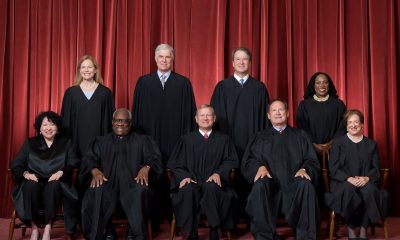
 U.S. Supreme Court4 days ago
U.S. Supreme Court4 days agoSupreme Court upholds ACA rule that makes PrEP, other preventative care free
-

 U.S. Supreme Court4 days ago
U.S. Supreme Court4 days agoSupreme Court rules parents must have option to opt children out of LGBTQ-specific lessons
-
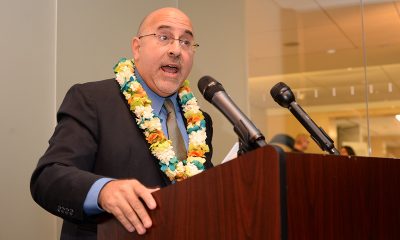
 National5 days ago
National5 days agoEvan Wolfson on the 10-year legacy of marriage equality
-
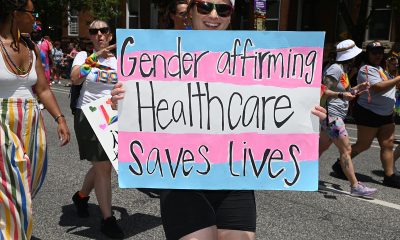
 Congress5 days ago
Congress5 days agoSenate parliamentarian orders removal of gender-affirming care ban from GOP reconciliation bill












